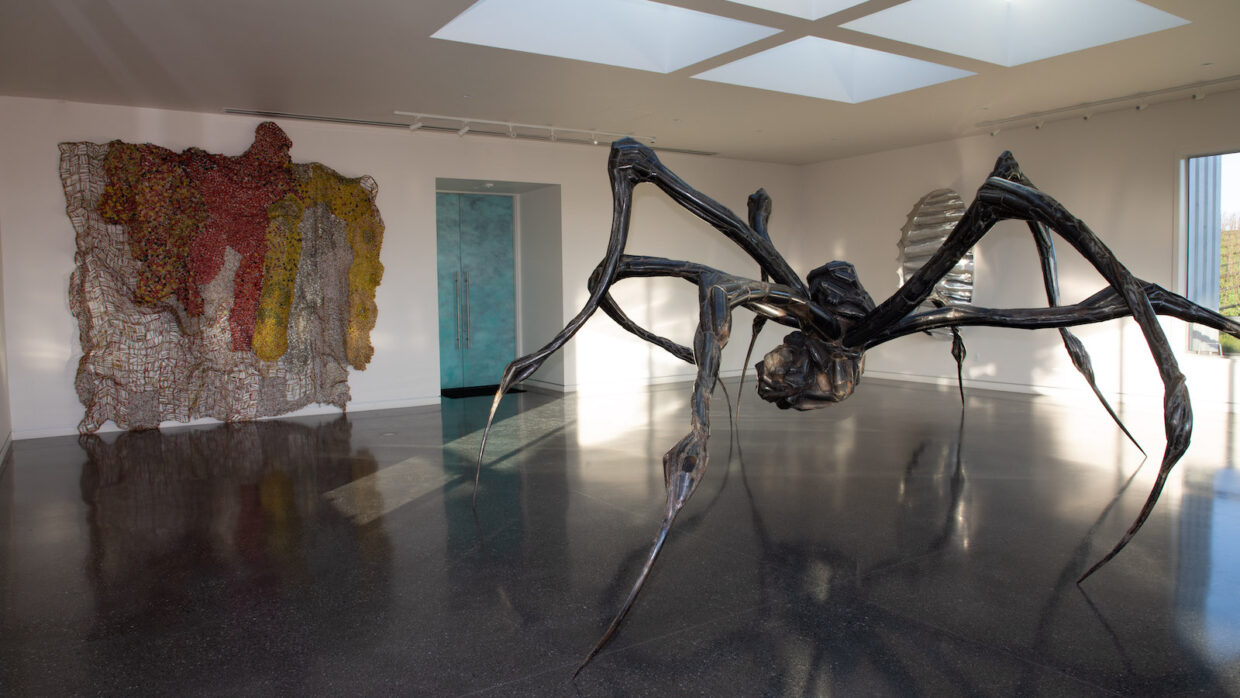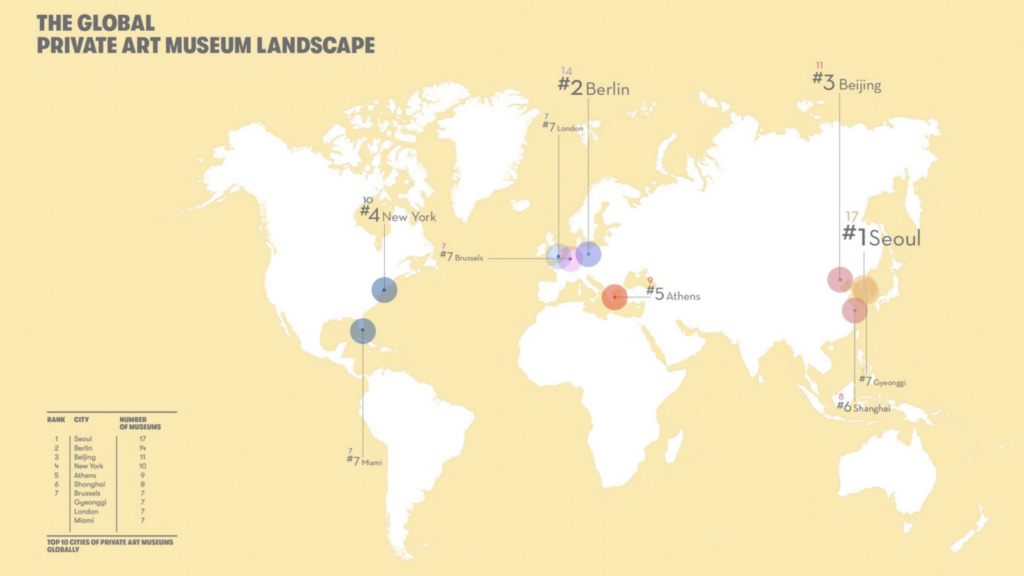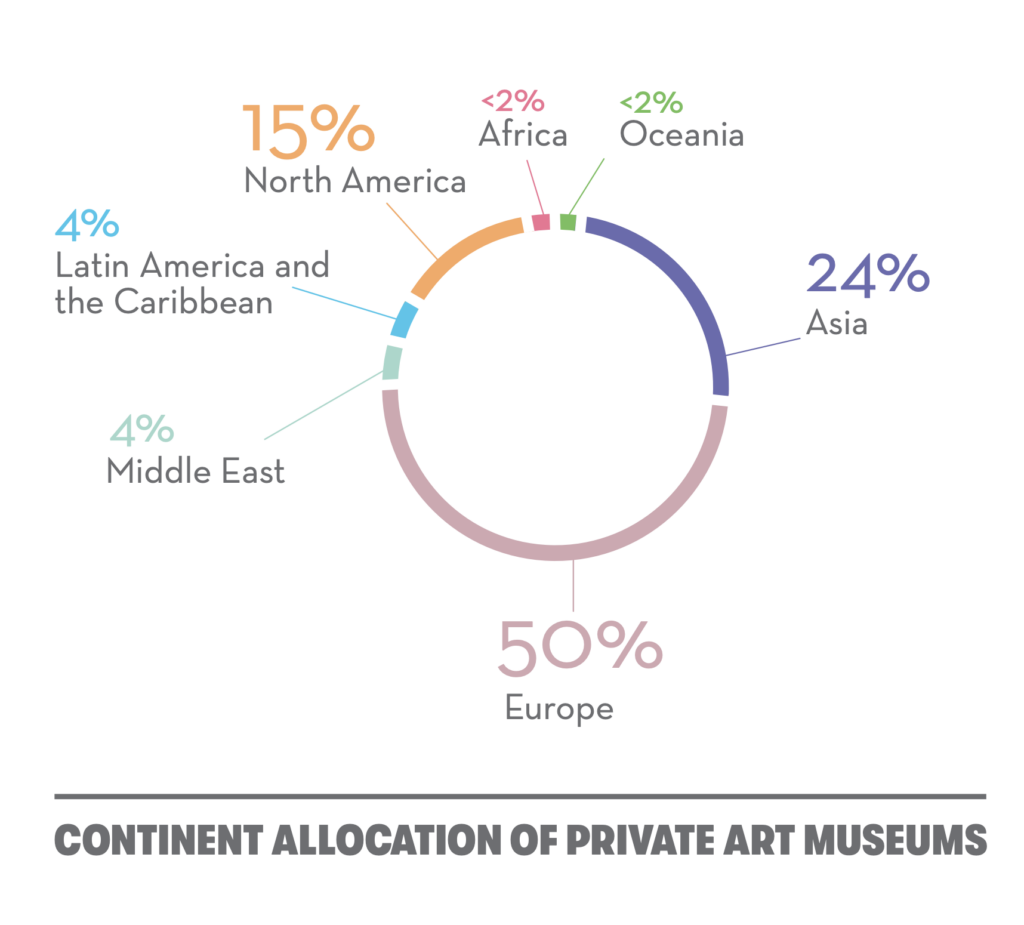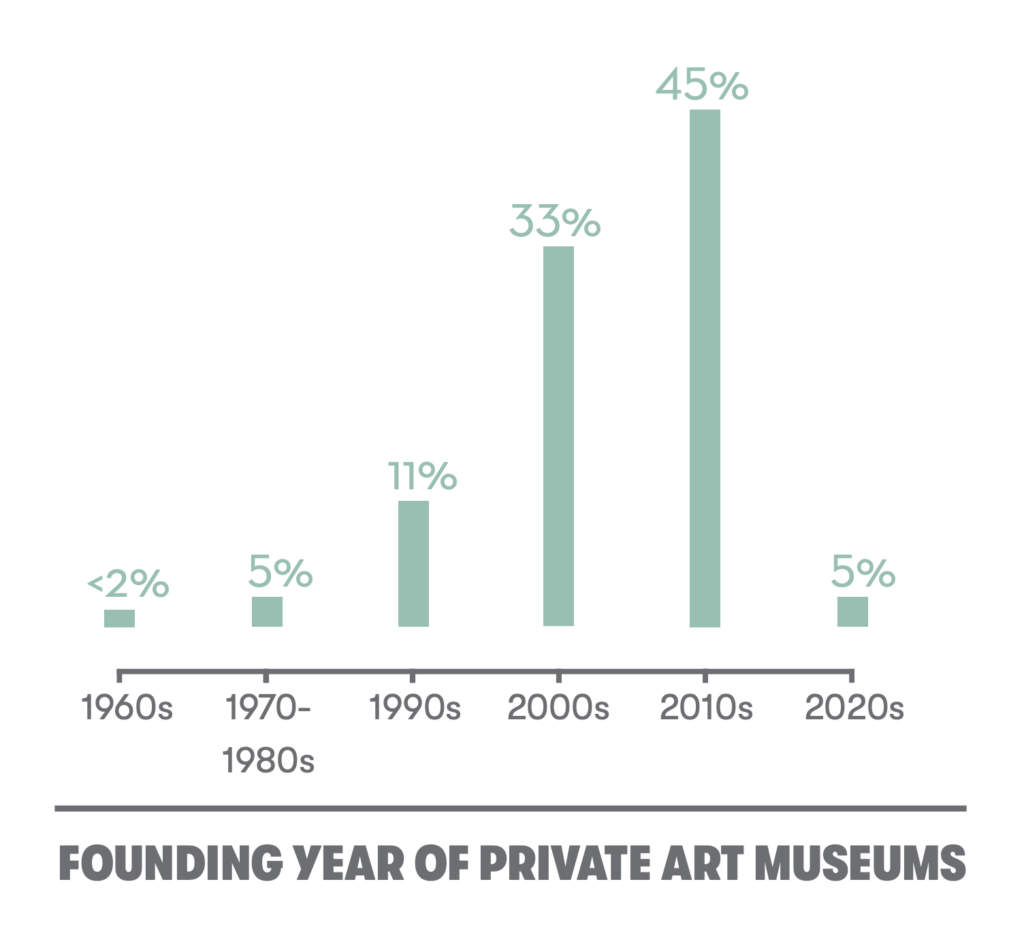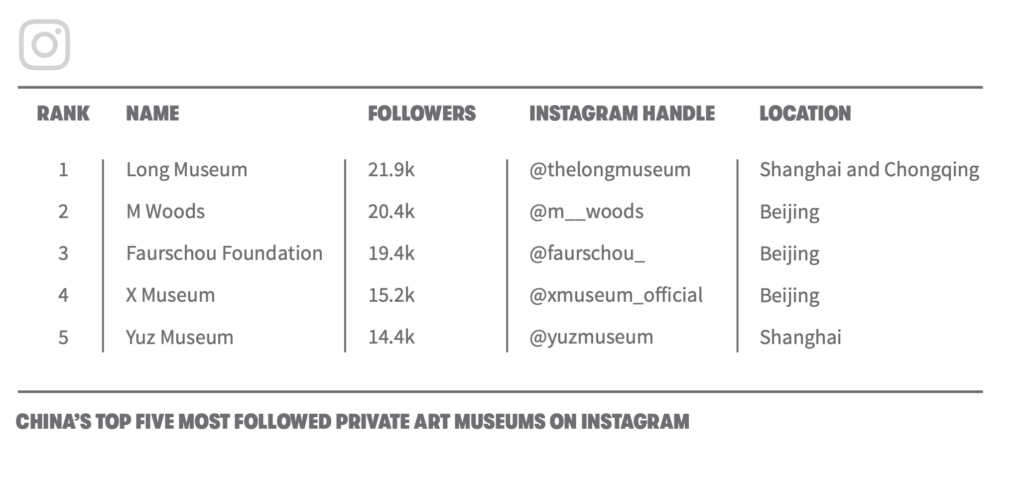The global art landscape is undergoing a significant transformation, with private art museums burgeoning across the globe, according to the Private Art Museum Report 2023 by LARRY’S LIST. This comprehensive report offers an in-depth analysis of the rapidly expanding private art museum sector, revealing a substantial increase in their numbers and influence over the past two years.
Between 2021 and 2023, over 350 new private art museums emerged worldwide, marking a 30% increase in the presence of these institutions. The United States leads the trend with 120 new museums, followed by China with 90, and Germany with 70.
Private art museums, often established by collectors to exhibit their personal collections, are playing an increasingly pivotal role in promoting cultural exchange and fostering artistic innovation. They are becoming essential platforms for artists, particularly those emerging or underrepresented in public institutions.
The report also highlights a shift in the nature of collections housed in these museums. While private museums have traditionally been associated with the display of classic and modern art, there is a growing emphasis on contemporary and emerging artists. This shift reflects the evolving tastes of collectors and the desire to present art that resonates with the current cultural and societal milieu.
In China, the report identifies particularly strong growth in private art museums, with a notable increase of 20% in the past year alone. This burgeoning art scene has been significantly bolstered by the Chinese government, which has been providing subsidies and incentives for the establishment of these institutions.
Among the most prominent private art museums in China are the Long Museum, the Yuz Museum, and the Power Station of Art, all of which have been instrumental in promoting contemporary art in the country and hosting exhibitions from renowned international artists.
However, the report also underscores the challenges that these private art museums face. Despite the rapid growth, issues such as a lack of professional management, difficulties in maintaining a steady stream of high-quality exhibitions, and challenges in attracting a broad audience persist. Yet, the future outlook remains promising. With further professionalization and international collaboration, these museums are poised to play a crucial role in shaping China’s cultural landscape and promoting Chinese contemporary art to the world.
Globally, as in China, the rise of private art museums is not without its challenges. The report underscores the sustainability issues these institutions face, particularly in terms of funding and public engagement. Unlike public museums, which receive government support, private museums rely heavily on their founders for financial backing. This dependence raises questions about the long-term viability of these institutions.
Public engagement is another area where private museums need to make strides. The report suggests that these museums often struggle to attract a broad audience, partly due to their perceived exclusivity. To address this, the report recommends that private museums adopt innovative strategies to engage with their audiences. These could include the use of digital technologies, interactive exhibitions, and educational programs that make art more accessible and engaging to the public.
The environmental impact of these institutions is another area of concern. As private museums grow in number and size, so does their carbon footprint. However, some museums are taking steps to mitigate this impact. For example, the report mentions that some institutions are implementing green practices, such as using renewable energy sources and reducing waste.
The Private Art Museum Report 2023 paints a picture of a dynamic and evolving sector that is reshaping the global art landscape. While the rise of private art museums presents challenges, it also offers exciting opportunities for artists, collectors, and the public. As these institutions continue to grow and innovate, they will undoubtedly play a crucial role in shaping the future of the art world.

